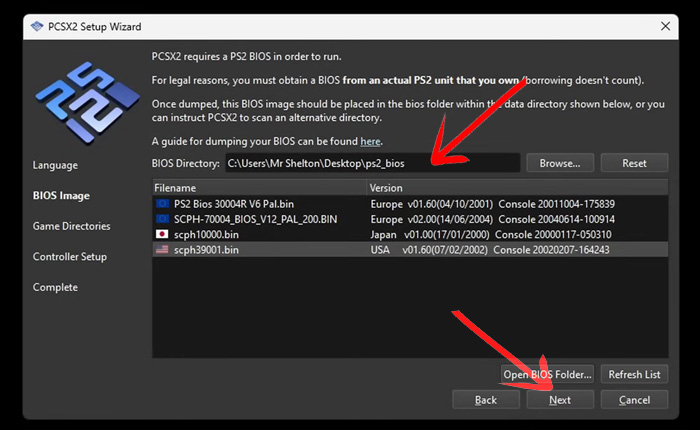
Introduction
The PS2 BIOS is the cornerstone of any attempt to emulate the PlayStation 2 system on a modern PC. With over 155 million consoles sold worldwide, the PlayStation 2 remains a legendary gaming system beloved for its iconic titles and groundbreaking performance. Yet, reliving that experience today depends heavily on understanding one vital component—the BIOS.
The PS2 BIOS, short for Basic Input/Output System, plays a crucial role in powering up the console and allowing games to run smoothly. Without it, the PS2 would be nothing more than plastic and wires. In emulation, the BIOS recreates the software environment necessary for the system to operate, making it an indispensable element for PC gamers and retro enthusiasts alike.
In this article, we’ll walk you through everything there is to know about the PS2 BIOS, including its function, versions, legal implications, and how to use it with emulators like PCSX2. Whether you’re just starting your retro gaming journey or refining your emulator setup, this guide will help you master one of the most critical parts of PlayStation 2 emulation.
1. What Is the PS2 BIOS?
The PS2 BIOS is essentially the firmware that initializes the PlayStation 2’s hardware during startup. It’s the first thing the console loads when powered on, preparing the system to run games, interact with memory cards, and communicate with the controller and disc drive. Without this layer, the PS2 couldn’t function—and neither can most emulators that seek to replicate its environment.
In an emulator like PCSX2, the PS2 BIOS mimics the console’s startup behavior, allowing gamers to run disc images (ISOs) and use virtual memory cards. It’s not just a random file—it’s a highly specific set of system instructions designed to replicate the original PlayStation 2’s functionality.
Using the correct BIOS version is essential to achieve a seamless gaming experience. Many games rely on region-specific settings embedded in the BIOS, which means selecting the right version can directly impact compatibility and performance.
2. History and Evolution of the PS2 BIOS
Over the years, the PS2 BIOS has evolved through various iterations tied to different models and regions of the console. Early Japanese versions such as SCPH-10000 were vastly different from later North American releases like SCPH-70012. These differences are more than cosmetic—they affect how the system handles memory cards, DVD playback, and even certain gameplay features.
As Sony released hardware revisions to the PS2, the BIOS adapted accordingly. Newer versions supported improved DVD drives, faster loading speeds, and better compatibility with peripherals. These changes also trickled down to the emulation scene, where newer BIOS files helped expand compatibility with modern operating systems.
Because of the regional encoding, the PS2 BIOS comes in variants for NTSC-J (Japan), NTSC-U (USA), and PAL (Europe). Each version reflects the broadcasting standards and localization needs of its target market. When using an emulator, it’s crucial to match the BIOS region to your game’s region for optimal performance.
3. Legal Aspects of PS2 BIOS
One of the most pressing questions around the PS2 BIOS is its legality. Simply put, downloading the BIOS from a website without owning the original console is considered copyright infringement. The BIOS is proprietary software created by Sony, and as such, it’s protected by intellectual property laws.
However, there is a legal and ethical way to obtain a PS2 BIOS: dumping it yourself from a console you own. This method is often allowed under “fair use” or personal backup provisions in many jurisdictions. It’s a legal grey area in some places, but in general, creating a backup of something you own is more acceptable than downloading it from unauthorized sources.
Respecting the legal side of emulation helps preserve the gaming community’s integrity. Using your own dumped PS2 BIOS not only ensures legality but also prevents issues with malware and corrupted files that often plague downloaded versions.
4. How to Dump the PS2 BIOS from Your Console
Dumping your own PS2 BIOS is a fairly straightforward process, though it does require specific tools. You’ll need a modded PS2 or the ability to run homebrew software, a USB drive, and a utility like uLaunchELF or BIOS Dumper.
Once your console is prepared, you can run the BIOS dumping software, which extracts the firmware and saves it as a .bin file onto your USB device. This file is then transferred to your PC and used within an emulator. The process ensures you’re using a clean, authentic version of the PS2 BIOS tailored to your console’s exact model.
Always verify the dumped file’s hash to ensure it’s complete and uncorrupted. This step minimizes issues with games crashing or emulators failing to boot. For best results, follow a community-approved guide to avoid missing critical steps during the extraction process.
5. PS2 BIOS and Emulation: The Technical Connection
The PS2 BIOS isn’t just a formality—it’s the linchpin of accurate emulation. Emulators like PCSX2 rely on the BIOS to recreate the console’s boot process, manage memory card interactions, and handle low-level system functions. Without it, most games won’t start, and those that do might behave unpredictably.
When a game loads in PCSX2, the BIOS sets the stage, initializing the virtual memory, graphics systems, and peripherals. This setup allows the emulator to mimic the timing and structure of an actual PS2, ensuring smooth transitions and fewer errors during gameplay.
Choosing the right PS2 BIOS version can dramatically improve emulation. Some games are optimized for specific BIOS versions, and certain titles may refuse to run without the correct region settings. For advanced users, testing different BIOS files can lead to better performance, reduced glitches, and faster load times.
6. Different Versions of the PS2 BIOS: Which One Should You Use?
With several BIOS versions available, knowing which one to use can be confusing. Common variants include SCPH-39001, SCPH-70012, and SCPH-10000. These names correspond to hardware revisions and regional models. In general, SCPH-39001 is considered the most stable for emulators, offering wide compatibility and fewer bugs.
That said, it’s important to match your PS2 BIOS to the region of the games you intend to play. NTSC-J games will work best with a Japanese BIOS, while PAL titles require a European BIOS for full compatibility. Failing to align these can result in display issues, loading failures, or even emulator crashes.
Using multiple BIOS files and switching between them is also an option in emulators like PCSX2. This flexibility allows you to tailor your setup depending on the game, ensuring that you’re getting the best performance possible.
Conclusion
The PS2 BIOS is more than a technical necessity—it’s the digital DNA of the PlayStation 2. Without it, emulating the console’s iconic titles wouldn’t be possible. From understanding what it does to knowing how to obtain it legally and use it correctly, mastering the BIOS is key to unlocking the full power of PS2 emulation.
By dumping your own BIOS and selecting the right version for your emulator and game region, you can enjoy smoother gameplay and a more authentic experience. Avoiding illegal downloads and respecting copyright laws also helps ensure that the emulation community remains strong, ethical, and future-proof.
In the ever-evolving world of retro gaming, the PS2 BIOS remains a vital part of the puzzle. Whether you’re revisiting childhood classics or exploring the console’s library for the first time, using the BIOS responsibly is your gateway to gaming nostalgia.
FAQs About PS2 BIOS
Q1: What is the PS2 BIOS used for in emulation?
The PS2 BIOS allows emulators like PCSX2 to mimic the internal functions of the PlayStation 2, including game booting, memory access, and region checking.
Q2: Can I run games without the PS2 BIOS in an emulator?
No, most PS2 emulators require the BIOS to function. Without it, games either won’t load or will be riddled with errors and bugs.
Q3: Is it legal to download the PS2 BIOS from the internet?
No, downloading the BIOS without owning the original console is illegal. You must dump the BIOS from your own PS2 to remain compliant with copyright law.
Q4: Which PS2 BIOS version is best for PCSX2?
SCPH-39001 is widely regarded as the most stable and compatible PS2 BIOS for emulators like PCSX2.
Q5: Can I switch between different PS2 BIOS versions in an emulator?
Yes, PCSX2 and similar emulators allow you to load multiple BIOS files and choose the appropriate one based on the game’s region or compatibility needs.
You May Also Read




